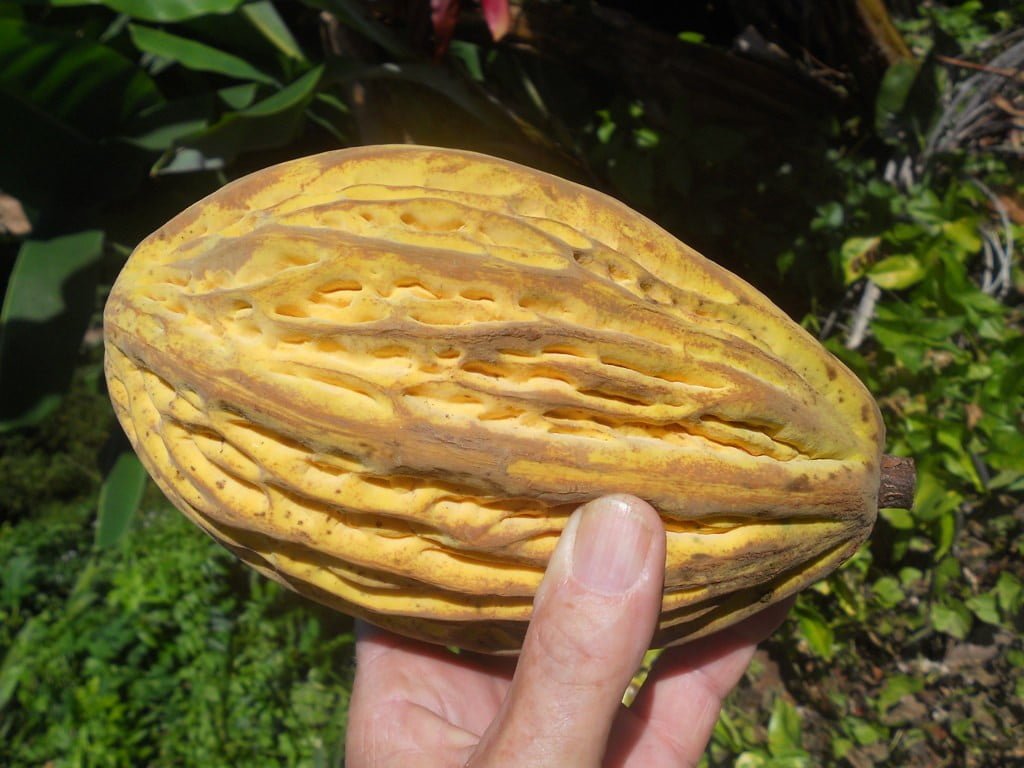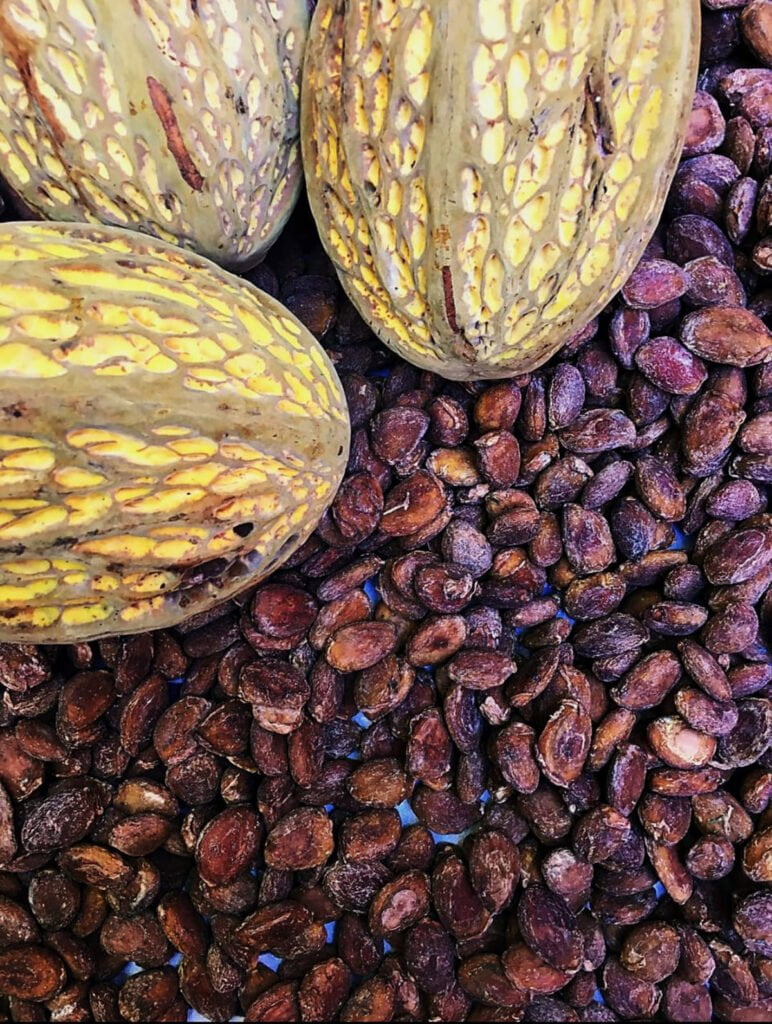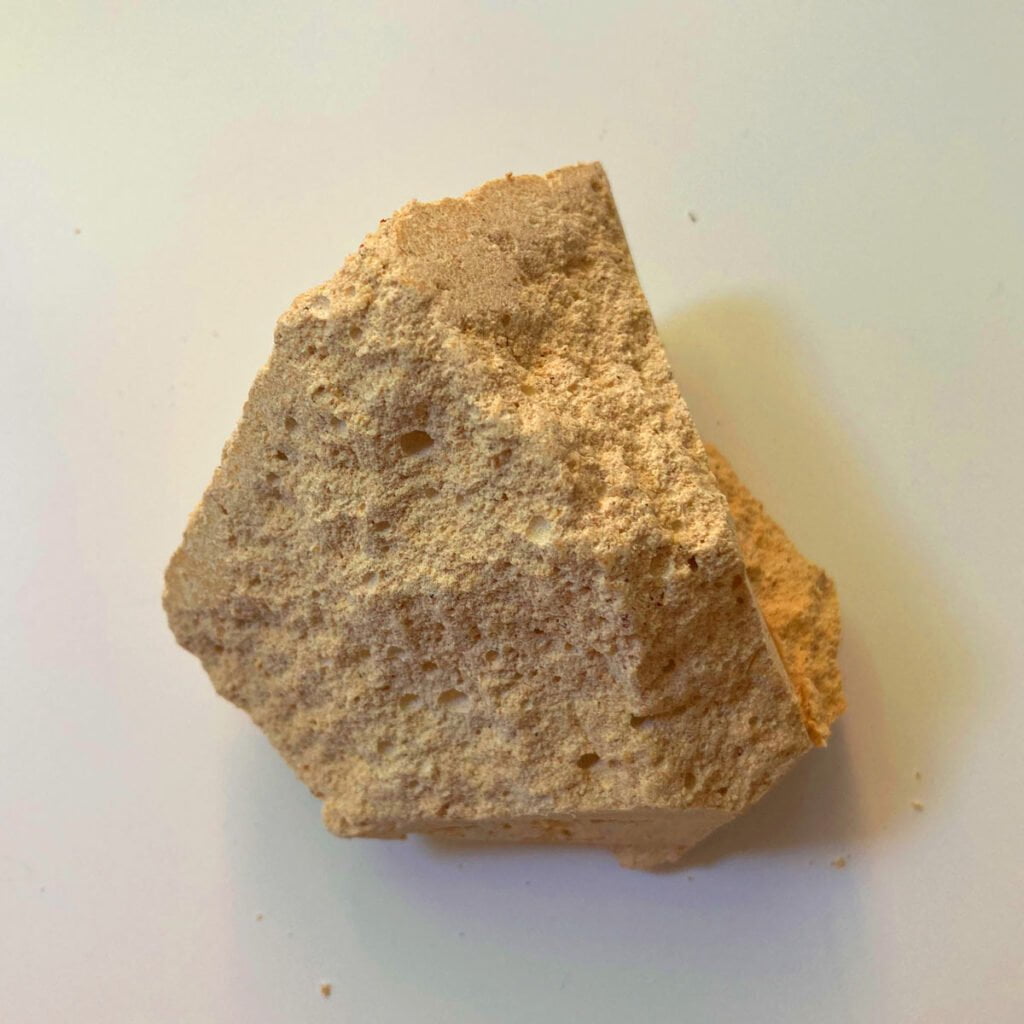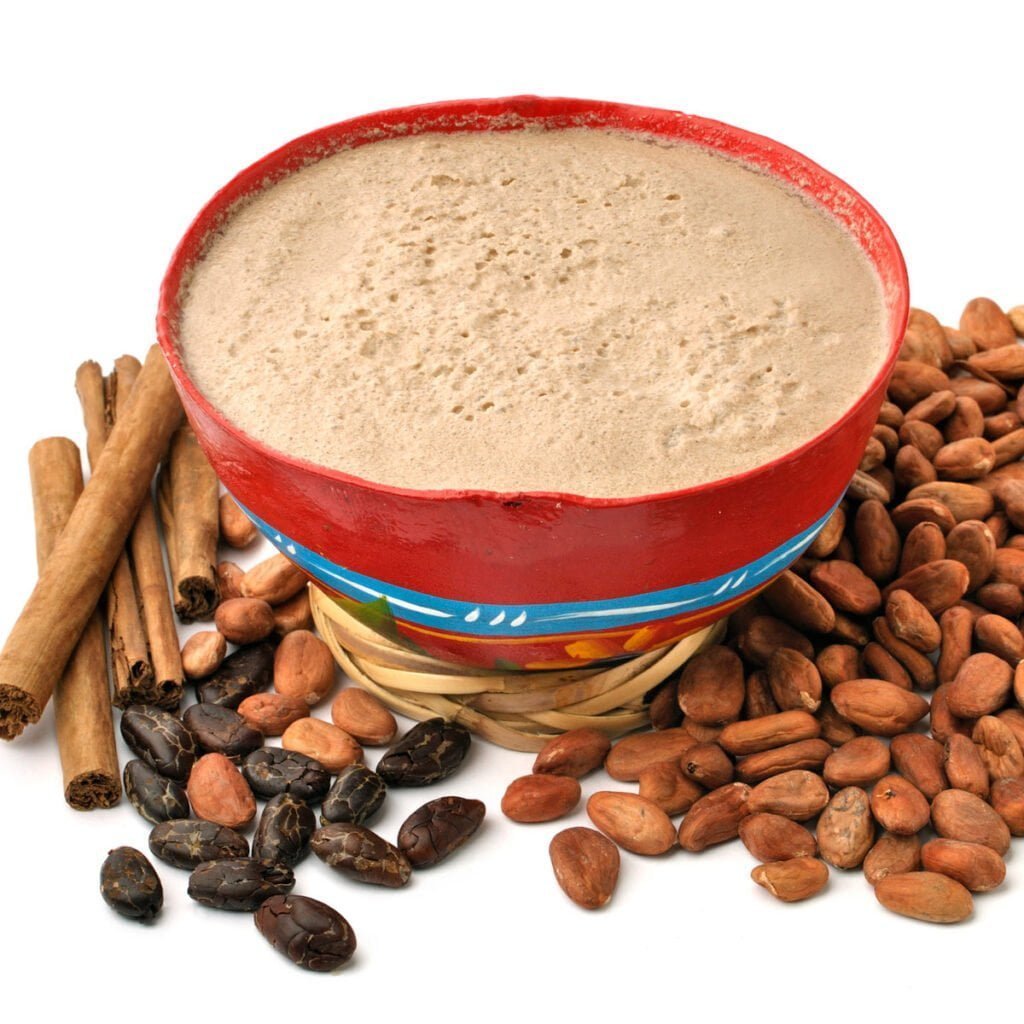Pataxte white cacao (Mocambo, Theobroma bicolor) – a few words about the cousin of the cacao tree

Featured products Learn more about our offer
View allOn the shelves of the average Polish shop, you will find all sorts of chocolate: from milk chocolate, with or without filling, through dessert chocolate, dark chocolate, to white chocolate, which for many connoisseurs is not real chocolate at all. Where does this disqualification come from? Hence, unlike other bars, white chocolate does not contain cacao powder at all, but only cacao butter [1]. Few people know, however, that there is a type of cacao in the cocoa world that is called white because of its light colour. While white chocolate lovers won’t find it saving the status of their favourite treat, white cacao has a rich history dating back to the ancient Mayans and many remarkable properties, including a unique taste that differs from traditional cacao.


Pataxte tree


Pataxte fruit
What is white cacao?
White cacao, a fruit from a tree called Pataxte (pronounced: ‘Pah-tash-teh’), is a lesser-known cousin of the cacao tree associated with all things chocolate. In the past, white cacao was commonly used in Mayan and Aztec cultures, but when the Spaniards arrived in South America, the European world became primarily interested in the brown cacao that now surrounds us at every turn. The knowledge about Pataxte has not yet become widespread, but currently, it is experiencing its heyday, at the end of which global success may await [2].


Pataxte, also known as mocambo tree or jaguar tree, belongs to the same genus Theobroma as the classic cacao and functions under the species name Theobroma bicolor. It grows in Central and South America and, as a free-standing tree, grows to a few metres, while growing among other trees it can reach a dizzying 30 metres [3]. By comparison, traditional cacao trees measure 15 meters at most [4]. Most importantly, Pataxte cacao is more white than brown, because although at first glance the fruit from the mocambo tree contains brownish seeds resembling almonds, the seeds turn out to be light grey, almost white, under the shell. They are also covered with a network of cracks reminiscent of porcelain crackles. The seeds from the jaguar tree are, like traditional cacao, high in calories and rich in protein and fibre, but also in Omega 9 acids and caffeine [3]. It is worth noting that Theobroma bicolor contains more protein and less fat than its classic cousin, making white cacao a better choice for those seeking protein without unnecessary extra energy [9].
Pataxte history – sacred and profane
Theobroma bicolor species has sometimes been neglected by researchers of South American plants and cultures. In particular, anthropologists do not account for the difference between Pataxte and other, more popular types of cacao, even though the local population considers white cacao as a distinct item in their daily diet. It is also negligent of researchers to forget the role Pataxte played in Mayan and Aztec rituals [5].


Traditional Mexican Tejate drink made from Pataxte cacao and corn
We have already mentioned on our blog that cacao played a large role in the religious customs of pre-Columbian South American cultures [6]. Discovered perhaps as many as seven millennia ago, cacao performed important functions in Aztec, Mayan or Olmec communities. It was primarily consumed in drinks and possession it indicated the high position and respect enjoyed by the owner. However, when it comes to religious matters, cacao was at the forefront of the offerings that humans made to ensure good fortune for the gods. The important role of cacao is also underscored by its presence in religious iconography: it appears as an attribute of the gods, and in the Mayans, it is even associated with the very beginning of the world [8].
It turns out, however, that despite the central role of traditional cacao as we know it in the lives of pre-Columbian cultures, there was an important place in symbolism for Pataxte as well. Indeed, white cacao may have been the key additive that gave cacao fruit drinks their… foam. Sixteenth-century texts describing the festivities of Native American communities show that the whipped foam in the drink was seen as a feature indicative of its excellent quality. This foam, however, could not be easily obtained in a drink made from cacao alone, so it was white cacao, mocambo, that was used to achieve an effect worthy of today’s cappuccino [7]. Despite the reluctance of European newcomers to the jaguar tree, so we know today that Pataxte was also prized by pre-Columbian civilizations – the absolute pioneers of cacao.
Theobroma bicolor today and tomorrow
Nowadays, Pataxte fruits are consumed in very different forms. The seeds of this cacao tree can be fried or added to soups, and the sweet pulp surrounding them in the fruit can be eaten raw. The shell formed after selecting the seeds and pulp can be – according to the principle of “nothing is wasted” – used as a natural pot or container [3]. The fruit of the jaguar tree is still used today to prepare drinks, often with thick foam, and these drinks are still popular during the holidays [2]. The taste of white cacao is certainly different from that of traditional cacao: it lacks the typical “chocolate-ness” and is somewhat reminiscent of macadamia and cashew nuts. However, it is so distinctive that it is difficult not to recognize it in other products after the first taste [9].
Pataxte cultivation is popular primarily in Mexico, Colombia, Brazil, Ecuador and Peru, although the names of the tree differ enough in these countries to make you think that a completely different species is involved. Now white cacao products are beginning to appear on the market, and not only in cold drinks or ice cream, but also in sweets: marzipan and chocolate. It is very rarely used, as ceremonial cacao due to its price and low availability. In Mexico, where the cultivation of the jaguar tree is also expanding, its fruit is eaten in sweets or as a raw snack. The city of Oaxaca even has a tradition of preparing a drink called “popo”, which is referred to by visitors as the “cappuccino of Oaxaca” [2]. No wonder!
But in addition to its nutritional and flavour benefits, white cacao is also said to have health benefits. Preliminary research on Pataxte fruit indicates that its pulp may be rich in inulin, which aids digestion and behaves like a natural probiotic: it promotes the growth of the bacteria in our digestive system while defending against invasive strains. In addition, white cacao turns out to contain antioxidants, whose positive effects on health are well known [2, 10]. So perhaps health-promoting products based on Pataxte fruit will soon be on the market.
White cacao has not enjoyed much fame so far, but it seems this state of affairs is slowly changing. It’s certainly worth keeping an eye out for further developments in the Pataxte fruit, a fruit that is known for its unusual flavour, many uses, long history, and – potentially – health benefits. Perhaps soon, when ordering hot cacao on a winter evening, we will be immediately asked: white or dark?
